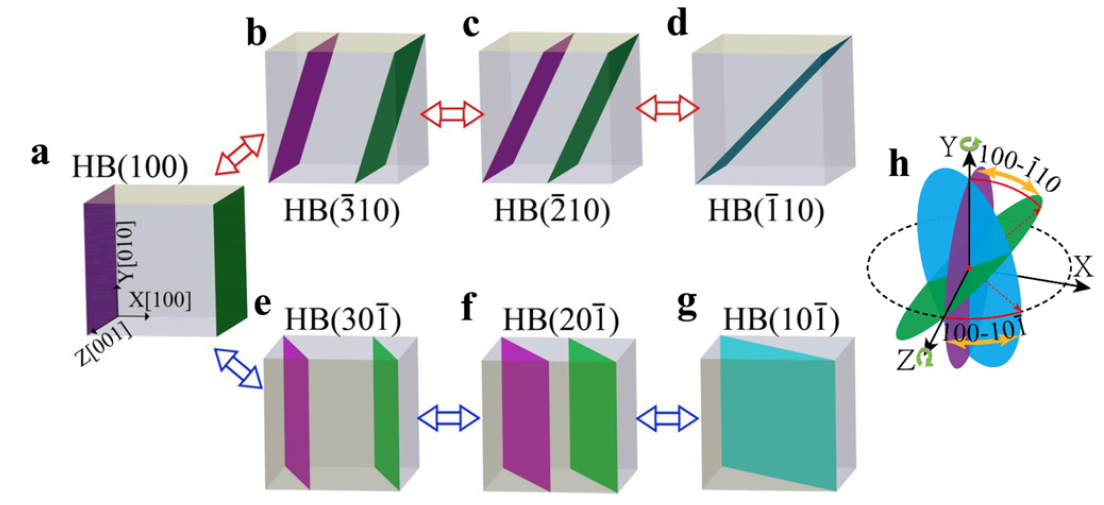A new diffusion mechanism of a <100> dislocation loop in BCC iron is suggested and published online in Nature Communications by Prof.Gao Ning group in Research Center for Particle Science and Technology,Institute of Frontier and Interdisciplinary Science, Shandong University. The title is Mechanisms for <100> interstitial dislocation loops to diffuse in BCC ironwith Prof.Gao Ning as the 1stauthor and Prof. Z W Yao and F Gao as the corresponding authors.

The interaction between energetic particles and materials would result in the displacement damages through the energy transfer process. With time evolution, the formed vacancies and interstitials would annihilate or grow into the voids or dislocation loops. The loops generally take the Burgers vector 1/2<111> or <100> in Fe-based alloys used as structural materials in nuclear reactors. The formation of loops affects the properties of materials, e.g. hardening, embrittlement, swelling and fatigue, resulting in the degradation of materials and related lifetime of materials. Thus, it is necessary to understand the loop properties for safety of nuclear reactors and extension of reactor life in future. For 1/2<111> loops, the diffusion and interaction of such a defect have been explored by researchers. For <100> loops, because of high energy barrier, it is very difficult to study its kinetic properties, Therefore, these loops are generally regarded as sessile dislocations. However, the recent studies indicate that <100> loops could also show the diffusion properties. To understand its diffusion mechanism is a key step to explore the related kinetic properties.
To solve above questions, the combination of accelerated molecular dynamics method, in-situ irradiation and characterization through TEM and TEM simulations, has been used to understand the diffusion properties of <100> loops. The results indicate the <100> loops could diffuse through rotation its habit planes with two degrees of freedom, different from the case of a 1/2<111> loop. Therefore, there are two possible processes during its 1D diffusion along its Burgers vector but both with higher energy barriers. These results have been validated by computer simulations and in-situ TEM observations, which provide new understanding for radiation damages and new data for multiscale simulations.
With the support from the Key Laboratory of Particle Physics and Particle Irradiation (MOE), the group of Prof.Gao Ning mainly focuses on the computer simulations and experimental validations for materials. The results have been published in Nature Materials, Acta Materialia and Journal of Nuclear Materials. The above study published in NC has received the financial support from the National MCF Energy R&D Program and the National Natural Science Foundation of China.
Paper link: https://www.nature.com/articles/s41467-020-20574-6
Written by:Gao Ning